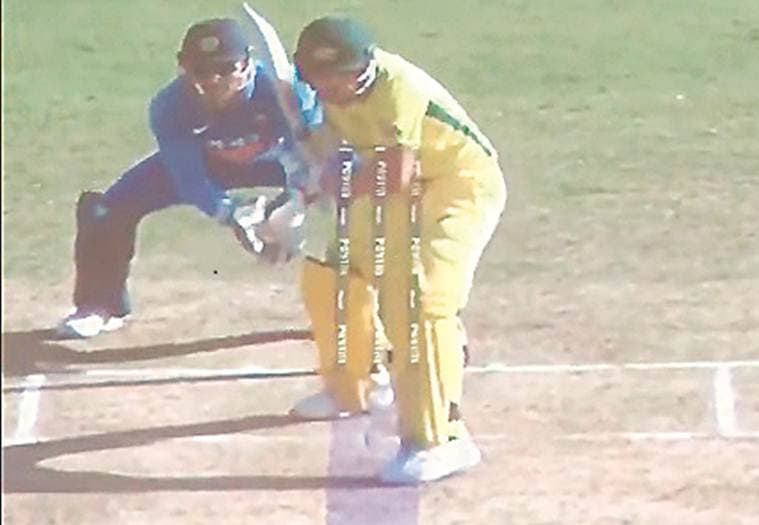
An apparent Hawk-Eye howler took the centre-stage after Aaron Finch was given out leg-before off Kuldeep Yadav during the third ODI between India and Australia. The Australia captain was on 93, when a leg-break (chinaman for a left-arm wrist-spinner) from Yadav hit Finch on the back foot, as he missed the flick. On-field umpire C Shamshuddin raised his finger, but Finch reviewed the decision.
The Hawk-Eye ball-tracking suggested that the ball had pitched on leg stump and went the other way. It had actually pitched on middle stump and came in a little. New Zealand allrounder Jimmy Neesham was quick to pounce on the error as he tweeted: “Finch LBW. Are we just gonna ignore the fact that ball tracking had it pitching in a totally different place to reality? I saw it pitching middle, maybe even middle and off. Ball tracking had it pitching on the leg. Still out but pretty weird.”
Then, commenting on another post, he added tongue in cheek: “Hawkeye having a few rum and cokes by the pool pre-game?” In the past, Hawk-Eye has made a few errors but most of them have come in the ball-tracking process. This one stands out as it has goofed up on the most basic element—on where the ball landed. That’s as egregious error as there can be and raises doubt over what else could go wrong with it. Something similar had happened during the 2011 World Cup semifinal between India and Pakistan, when Sachin Tendulkar was given out leg-before off Saeed Ajmal.
Tendulkar went for a review and based on the Hawk-Eye ball-tracking, the decision was overturned. There also, a difference between the final real ball position, as seen on TV, and the virtual impact position had been detected. The apparent curvature of the Hawk-Eye trajectory after the ball had pitched was put under the scanner as well. The Hawk-Eye defended its analysis, putting out a statement that had said: “TV cameras take a picture of the action 50 times per second. As such there is NO frame of video that shows the impact point on the pad. The interception point is in between REAL balls, so to show this we insert a VIRTUAL ball.”
Using diagrams, it had also stressed upon the fact that the Hawk-Eye projection captures both the front-on and run-out angles. The Hawk-Eye is yet to respond to an email from the Indian Express, with regards to Finch’s dismissal today. Host broadcaster, Star, couldn’t be contacted.
Finch had been on the receiving end of the DRS ambiguities in the recent past as well. In December last year, in the first Test against India at Adelaide, he was given out caught behind off R Ashwin in the second innings. The opener didn’t go for a review then, although the replays, Snicko and HotSpot, had suggested that the ball missed the gloves. The Australian team was later told that there wouldn’t have been enough evidence to overturn the decision even if Finch had reviewed it. At the post-match presser, Australia Test captain Tim Paine had said: “Yeah, the DRS is interesting…”
Thus, Finch had to walk back seven runs short of his 12th ODI hundred.